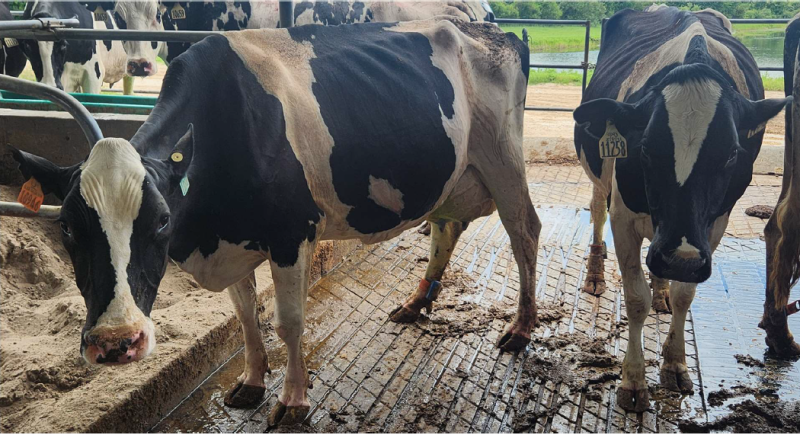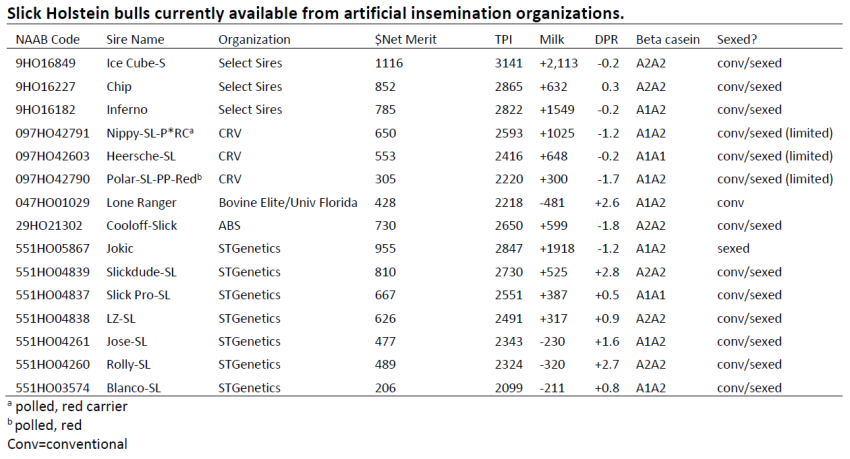Pete Hansen, UF/IFAS Dairy Reproductive Biology Specialist
The slick hair mutation is a naturally occurring modification in the prolactin receptor gene that causes cattle to have unusually short hair. The mutation is a dominant trait, so cattle that inherit one or two copies of the mutation express a slick hair coat. An example of a cow inheriting the slick mutation is shown in Figure 1 below.

Figure 1. A cow with the slick mutation (left) next to a cow with normal hair coat. The short hair coat is particularly apparent on the face and poll of the slick cow. Credit. Pete Hansen, UF/IFAS
–
Slick cattle have superior ability to regulate body temperature during heat stress. Research from Florida and Wisconsin indicates that the effects of heat stress on milk yield and reproduction are reduced in slick Holsteins. The mutation was originally introduced into Holstein cattle in Florida by Dr. Tim Olson, University of Florida, by crossing Holsteins with cattle of the Senepol breed in which the mutation is very prevalent. Backcrossing with Holstein since the original cross in the middle 1980s has resulted in animals that are essentially Holstein except for chromosomal regions near the prolactin receptor gene.
A variety of artificial insemination organizations have produced semen from slick Holstein bulls. All these animals can be traced back to the original cattle generated by Olson. The slick bulls whose semen is available today are heterozygous for the slick mutation. In other words, the bull has one copy of the slick mutation and one copy of the normal prolactin receptor gene. Half of the offspring will be slick, and half will have normal hair length.
The Table 1 below details slick Holstein bulls whose semen is currently commercially available. Contact the relevant organization for more information.
- Federal Estate Tax and Gift Tax Limits Announced For 2026 - December 19, 2025
- Why Do I Have So Many Open Cows? Causes of Reproductive Failure - December 19, 2025
- Wiregrass Cotton Expo Offers Resources, Research, & Real Solutions for Growers in Southeast – January 22 - December 19, 2025

